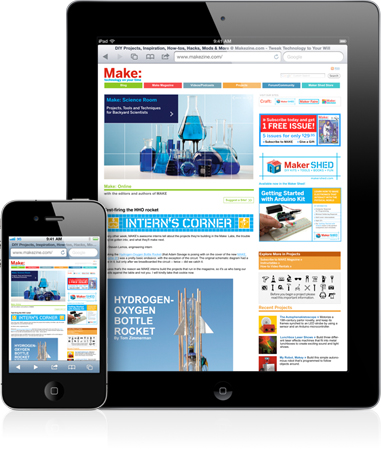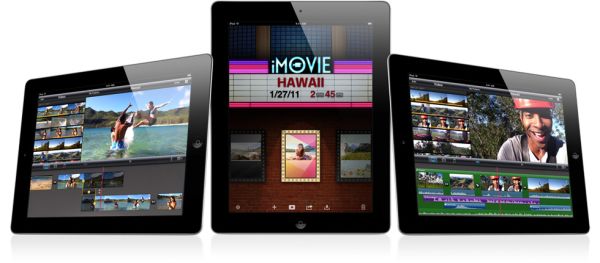The iPad 2 and iOS 4.3 Announcement
by Andrew Cunningham & Cara Hamm on March 2, 2011 11:21 PM ESTiOS 4.3 - iOS 4 redux
Those of you hoping to get some information on iOS 5 today are out of luck - you'll probably have to wait for the iPhone 5 announcement before you see the true next-generation iOS. iOS 4.3, which requires the newly released iTunes 10.2, adds some new features to the now-familiar iOS 4 without changing much else.
The first thing you should know about the next iOS update is the list of supported models - Apple lists, in additon to the iPad 2, the original iPad, the iPhone 3GS and 4, and the third- and fourth-generation iPod Touch. Missing from this list are the iPhone 3G and the second-generation iPod Touch, which won't be supported by any iOS update past 4.2.1. The CDMA iPhone 4 is also excluded from the 4.3 list, although Apple hasn't provided any reason as to why it's not included.
This information might sting a bit for owners of these devices, but it certainly isn't surprising. The iPhone 3G missed out on many of iOS 4's banner features - multitasking and home screen wallpapers being chief among these - and performance has been notoriously poor on these older devices, though the 4.1 and 4.2 releases did improve the situation to some degree. It's too bad that Apple can't deliver new software updates to all of its users indefinitely, but it's understandable that they don't want to hamper newer devices' feature sets in order to maintain support for devices with 128MB of RAM and sub-500MHz processors.
Now that you know what devices won't be supported, let's talk about the features that supported devices should see when the new update hits on March 11th.

All supported devices should see a tidy increase in JavaScript performance in Safari - Apple claims that its new Nitro JavaScript engine is twice as fast as the old one. It's not a consolation for those hoping for Honeycomb's true tabbed browser, but it should improve the experience for anyone already used to Web browsing in iOS.
AT&T iPhone 4 users will also get the Personal Hotspot feature included on the new Verizon iPhone - contingent on AT&T's support for the feature, they'll be able to share their phone's 3G data connection with up to five wi-fi enabled devices. AT&T's GSM/UMTS network should allow this feature to work even if the phone is being used to make calls, which will be a nice feature for the AT&T faithful.
Next up, users who were discouraged to see the iPad's orientation lock become a practically useless mute switch at the onset of iOS 4 will now have the option to make it an orientation lock once again. There's not much else to say about this one.
The last feature I want to talk about is the one that I'm the most excited about, personally - people will finally be able to stream their iTunes libraries to their iOS devices over their wi-fi networks, just as they've been able to share their libraries with other iTunes users for years now. It may not matter much to users with higher-capacity devices, but this forehead-slappingly simple feature is going to be awesome for me - I can finally access all of the music from my 40+ GB iTunes library on my 16GB iPhone while I'm wandering around the house, and I couldn't be happier about it.
iOS 4.3 further improves iOS 4, but it doesn't really address the underlying problem with iOS - it's becoming a bit dated, and that some of Honeycomb's interface improvements make Android tablets more usable for heavy multitaskers without negating the elegance of an all-touch interface. This is understandable, for now - many Apple users are perfectly happy with iOS 4, so why rock the boat? - but I'd like to see some more drastic changes in iOS 5, especially given how multitasking-oriented the new hardware is.
GarageBand and iMovie - iLife for iPad
One of the most common criticisms of the iPad is that it is designed for media consumption rather than creation - if you want to look at web pages or photos or movies, it's great, but if you're in the business of making any of those things, it leaves something to be desired.
I believe that this problem is endemic to tablets - any device that is mostly screen is going to lose to something that accepts more versatile input devices - but Apple is moving to remedy some of those complaints with new apps based on its iLife suite.
iMovie appears to be a relatively full-featured movie editor that can work with movies stored on your iPad or with movies you capture with the device's built-in camera.
iMovie for iPad supports exporting to YouTube and to iTunes, among other services, and gives you access to a range of transitions and sound effects, to boot. Expect it to deliver a good amount of the Mac version of iMovie's functionality, though you certainly won't be able to replace your MacBook with a tablet just yet.
Most of these statements also apply to the iPad version of GarageBand, a simplified version of the iLife app. The iPad app can record up to 8-tracks from recorded audio, loops, or from the app's simulated instruments (touch versions of a drumset, keyboard, guitar and bass guitar are all represented). As with iMovie, serious users will still want to use the desktop version of GarageBand, but the iOS app goes some way toward making the iPad a more usable prodution device.











102 Comments
View All Comments
tammlam - Thursday, March 3, 2011 - link
As tablets become more common, it's allure will wear out just like the netbook fad. Netbooks will still be around; however people aren't excited anymore by them. Tablets can enjoy the spotlight for now until the next big thing comes along.realroz - Thursday, March 3, 2011 - link
I got an iPad to explore it. My laptop is my main productivity machine. I still use the iPad a lot for a few select tasks and I don't think I would want to go back. It has become a very useful tool around the house. I use it to monitor cams, it's my garage TV, I use it when cooking for recipes and sometimes at the table for reading. I hear what you are saying in terms of faddishness but I don't think this sort of tablet is going away - it just needs to find the right areas of use for individuals and they won't want to give it up.jcandle - Thursday, March 3, 2011 - link
That's because netbooks are mostly being replaced by two major market segments colliding. The increasingly functional smartphones and lower cost, faster, and more power efficient ultraportable notebooks. Netbooks that can effectively tackle the increasing rich media consumption of consumers are nearing the cost of notebooks. If portability is desired only a small bump in price results in a new ultraportable. Gone are the $2k starting price tags. Those who bought into them for their novelty value will always continue to chase new fads as you pointed out but those who found utility in them now have new options. Of course with a new refresh in Intel devices in mobile arena now dominated by ARM based chips we may see some design shake ups and possibly new convertible tablets. Thus completing the cycle and bringing netbook and tablets full circle into consumer devices.BSMonitor - Thursday, March 3, 2011 - link
I do not think that tablets, especially touchscreen, will ever replace netbooks. All of the uses listed above are more of the behavior of a consumer than a producer. Do not get me wrong, it is a great tool for all of that.. But try building a spreadsheet with all kinds of formulas and such, copying and pasting that info into a "word" document... Try editing of music, powerpoints, etc... See what I am getting at.. Although I am sure all of it can be done, it still cannot be anywhere near as efficient as a keyboard and mouse. Multitasking is there, but still not the experience of netbook/notebook/PC.Juzcallmeneo - Thursday, March 3, 2011 - link
http://www.engadget.com/2011/01/04/asus-eee-slate-...totenkopf - Friday, March 4, 2011 - link
+repI agree. Tablets are now role player style devices and they are here to stay. They will stop selling like hotcakes in a couple years similar to the netbook phenomenon, and will join the laptop in ubiquity.
The most important Apple innovation was the development of a modern, robust, and user friendly App market made for consumers by consumers. This is what gave real meaning, novelty, and utility to portable devices. The UI on all of apples most popular recent devices is by and large the same UI, as boring as it is compared to what one can do with Android is of little significance so long as it can maintain critical mass in marketshare to drive App development . Android, iOS, WebOS, Phone 7, etc. are only as relevant as their App experience. This makes me question the legitimacy of things like tablets and netbooks. I would like to see a company release a netbook type device that has only a screen, keyboard, and touchpad in a super slim, lightweight package that can wirelessly pair with my Android phone. said company then needs to make a App market component to drive the thing and voila! You could do the same but with a tablet too... just extend your phone to whatever form factor you fancy.
This all goes back to my dream of desktop performance and storage in a smartphone form factor that can wirelessly pair with every peripheral/appliance I have (monitors, mice, keyboards, speakers, washer, drier, oven, car etc.). Mix in a little cloud action and you could always have everything right in your pocket.
bplewis24 - Thursday, March 3, 2011 - link
People weren't "wowed" because everything announced from a hardware standpoint is already seen or bested by the competition.Lastly, it's mostly "more of the same" from an OS perspective. There weren't any significant changes to the UI or multi-tasking/notification aspects of iOS, which some people are waiting for.
Brandon
SimKill - Thursday, March 3, 2011 - link
As a guy with common sense, I cannot fathom how it would be practical for apple to roll out a ultra hi-res display on a 10 inch form factor. I see two major problems with having 2048*1536 on the iPad for atleast a year or two.Firstly, the cost would be outrageous. General public does not seem to grasp the idea that it's far easier to bump the density for smaller screen sizes in comparison to larger ones. I do remember seeing a 4.7" 1080p screen prototype somewhere but I still think it's far too early for it to be practical.
Secondly, 2048x1536. Just look at the number of pixels. Everyone seems to forget that to push 4 times the pixels you need very powerful processing power. To put things into perspective, even normal desktops today don't have that many pixels. Also, running games on anything but the latest hardware (I'm thinking about the Radeons and the GeForces) is a complete joke at that resolution. You might mistake them for a slideshow rather than a game.
And finally, the amount of electrical power it would consume would be sizeable. Which, in a market where screens consume the bulk of the power already doesn't seem quite feasible to me.
Juzcallmeneo - Thursday, March 3, 2011 - link
I agree and have been arguing these same points. I think its closer to 2 years before its going to come around.sprockkets - Wednesday, March 2, 2011 - link
"The iPhone 3G missed out on many of iOS 4's banner features - multitasking and home screen wallpapers being chief among these"Really? No user changeable wallpaper on the iphone 3G? Lame.